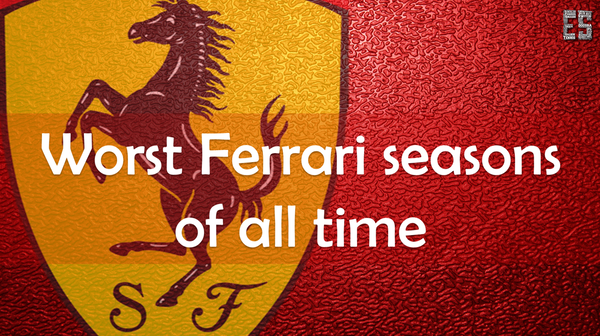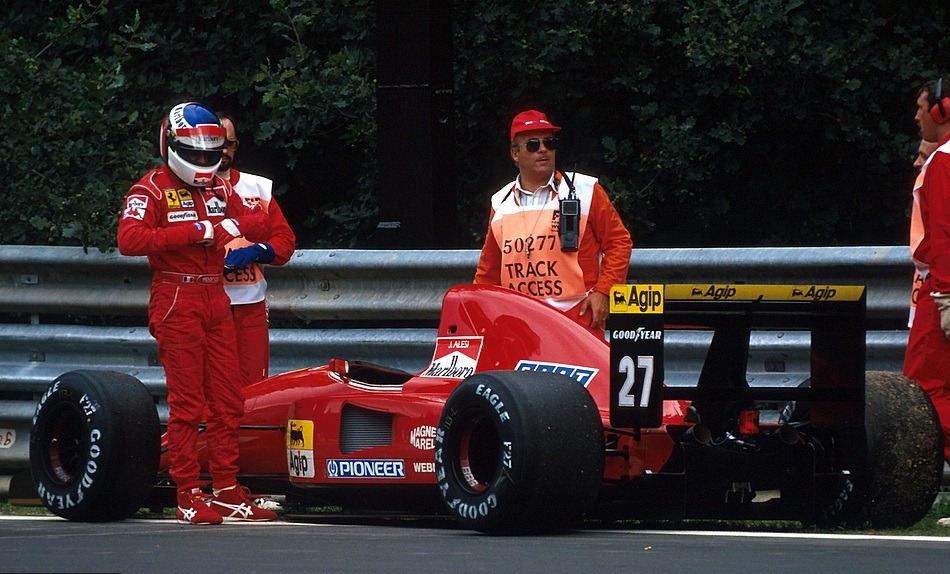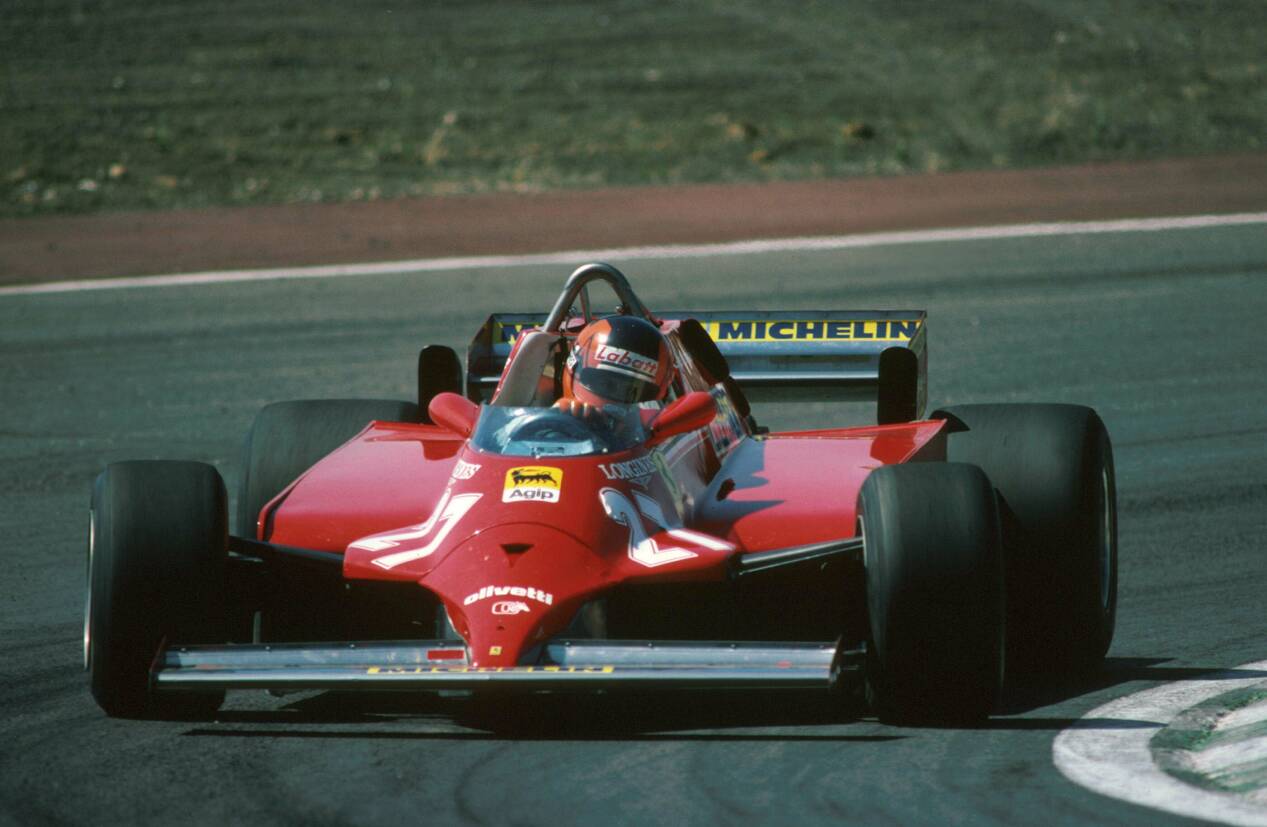

From South Korea to India, from Australia to the USA, wherever F1 has gone in the recent history, we have always seen the Ferrari fans or Tifosi (what they like to call themselves) are found in vast numbers waving the red flag with the prancing horse. But with the immense fan following, comes the responsibility of making them happy by taking in wins and championships.
Ferrari is the only team running since the inaugural season of 1950 and has managed 16 Constructors Championships and 15 Drivers Championships along with 224 race victories. Amongst all the highs, there are seasons in between where the red scarlet Scuderia disappoints not only the Tifosi but the whole F1 paddock, producing an uncompetitive package, lacklustre updates and many at times a car that suffer from reliability woes.
The 2016 season is no different. Having shown some promising signs early in the season, both Kimi Raikkonen and Sebastian Vettel has suffered due to lack of proper upgrades, reliability issues and more than anything poor strategy calling.
ADVERTISEMENT
Article continues below this ad
Here we bring you the worst Ferrari seasons of all times:
1992

via Imago
Jean Alesi at the 1992 Belgian Grand Prix
That was the year of the flying Williams FW12, a car so advanced that most said it could be driven by a monkey, and McLaren/Honda partnership living its last hurrah, giving Ayrton Senna less than he would need to reach a fourth world title.
On that scenario, Ferrari promised well. Out John Barnard, in Steve Nichols and Jean-Claude Migeot on the drawing side. And when you bring together the “father” of McLaren MP4/4, the incredible winning machine made famous by Ayrton Senna and Alain Prost, and a recognised top aerodynamicist, you should expect fireworks, especially having a talented driver onboard just as Jean Alesi. The F92A had quite a revolutionary design, with its double bottom and air channels below the side pods conceived to create some kind of ground effect.
But the “jet fighter alike” was as much a disaster as it could be. Not less than 20 DNFs in 16 GPs shows reliability was a pity, and two podiums were all the poor French could earn. Ivan Capelli came to be, finally, an Italian on the Scuderia but ended with his reputation destroyed among the Tifosi. The Reparto Corse even tried to develop a transverse gearbox version, the F92AT, and Nicola Larini was drafted to replace his fellow countryman on Japan and Australia but made no better. Things would start to change the year after, with the return of Gerhard Berger and a more conservative approach, design-wise. A real revolution would start, however, in 1994, with a certain Jean Todt arrival.
1980

via Imago
Gilles Villeneuve at the 1980 British Grand Prix at Brands Hatch
As much as the year before was unforgettable, bringing a hard-earned crown and showing that Ferrari could also develop a wing car as efficient as its rivals, the 1980 season for the Prancing Horse was disastrous.” Il Commendatore” stuck with a combination that was way outdated and thought that some minor changes on Jody Scheckter’s champion 312T4 were enough to keep winning ways. Not that there were so many changes on F1 – teams relying on the good old Cosworth V8 were the majority, while turbos slowly started to gain ground, by the hand of pioneers Renault.
And even if Scheckter and Villeneuve made an explosive combination – after the Canadian support to his teammate in 1979, one should expect the roles could be inverted then, neither one nor the other had nothing to be proud of. It was necessary to drop until P14 on final standings to find the second. Scheckter was even below that, on P19, and decided enough was enough. At the end of that year, he decided to call it quits and waved goodbye to the circus.
The Canadian, whose opportunity on a top team was given by Maranello’s team and had total support from the Commendatore himself, would stay, hoping for better days.
1973

via Imago
The Ferrari 312b3. Courtesy: f1fanatic.co.uk
Not even Mauro Forghieri could do anything that year to save it in terms of results. The good old 312B2 was more old than good and only when Scuderia’s top technician decided to create a B3 version, which would prove crucial to 1975 Niki Lauda championship, luck started to change. But a scarce tally of 12 points, no podiums and the shame of being dominated by British “garagistes”, such as Lotus, Tyrrell, Brabham and March made no good to the Maranello’s troops. As it happened on the odd years before (1969 and 1971), Jacky Stewart was the man to beat
Ok, it would be hard to deny the flying Scotsman his third crown, but even Jacky Ickx could do little with what he had in hand. While success was huge on sports cars, the 12-cylinder boxer engine suffered to match the then-popular (and nimble) Ford Cosworth V8 DFV. And Arturo Merzario started the year well, being fourth in Brazil and South Africa, but that was that. It must be said that the decision of skipping Netherlands and Germany rounds even worsened the frame.
Ickx and Merzario wouldn’t be retained for 1974, as the team then led by a young Luca di Montezemolo decided to bring Swiss Clay Regazzoni, and he recommended a certain Austrian which showed promise at BRM, one Niki Lauda that wouldn’t need to wait for too much to shine with the Prancing Horse.
1981

via Imago
Villeneuve driving the Ferrari, 1981
After 1980’s total fiasco and Jody Scheckter’s departure, reaction was the word at Maranello’s headquarters. And the promising French Didier Pironi was drafted to partner Gilles Villeneuve – in theory, to help the Canadian to fulfil his promise and bring the team back to the top. If the turbo engines proved to be more than a match for the aspirated counterparts, then, the venerable 12cyl boxer could finally rest in peace.
The then new 126CK proved fragile and had a quite poor aerodynamic efficiency. The V6 turbo was also brutal – too much power, but hardly on the right time. Villeneuve was quoted to saying that its handling was similar to a truck. And by the Canadian hands, it even won two GPs, Monaco and Spain, but that was 100% drivers merit. The fifth place on Constructors Championship was way less than Ferrari could expect – better things should come in 1982, but that wasn’t to be. Once more, the DFVs had the better, this time with a young Brazilian called Nelson Piquet, who would show more of his talent way ahead.
2014

via Imago
Kimi Raikkonen in the F-14T
Fernando Alonso is touted as the best of his generation – you just need to ask the likes of Emerson Fittipaldi and Alain Prost to be sure of, but, more than ever, actually you’re as good as your car. And on 2014, the first year of the V6 hybrid power units, the F14 T was reliable as a tank, but not fast enough. The engine crew said that their conservative choices were dictated by aerodynamic concerns, the aero crew later would admit that they were also conservative (the car had huge trouble to generate enough heat on the tires, hence the weak performances of quality), while Mercedes and Renault-powered teams flew.
Put together some discussed strategic choices (such as the choice of the inexperienced Marco Mattiacci to replace Stefano Domenicali, who decided to leave) and is easy to understand why it was the first winless season since 1993. And the returned Kimi Räikkönen never fell in love with the new package, what explained the results below par (he would show later that he had yet much to show). It wasn’t certainly easy to see the departed Felipe Massa, quoted almost as retired, going more to the podium than the Spaniard (and with a pole position on his name).
Mattiacci was dumped as fast as he was drafted in and, as one would expect Alonso true to his words (he said he would end his career at Ferrari), the driver from Oviedo decided to leave and rejoin McLaren, hoping for a better package (which he still is). The promise was for total revolution on 2015, starting with Sebastian Vettel joining the team.
ADVERTISEMENT
Article continues below this ad
2009

via Imago
Kimi Raikkonen driving the Ferraro at Nurburgring, 2009. Courtesy: f1fanatic.co.uk
The 2008 season ended in a bittersweet way – Constructors title went to Maranello, but Felipe Massa was denied drivers crown by the engine failure on Hungary and the refuelling one on Singapore. With the strong duo of the Brazilian and 2007 champion Kimi Räikkönen intact, one could only believe that Ferrari would be at least a contender. But then came Ross Brawn with the ex-Honda car with its double diffuser and Mercedes power, a talented kid named Sebastian Vettel on Red Bull, a pumped number 1 Lewis Hamilton, and only then the red (and ill-fated F60).
ADVERTISEMENT
Article continues below this ad
With slick tyres returning and the advent of KERS, that season brought a new challenge, one which the team led by Aldo Costa couldn’t cope well with. Performance on the first GPs was terrible, points came only in the fourth round and Finn’s third place in Monaco was a brave display of driving, just as his surprising win on Spa-Francorchamps.
To make matters worse, Massa was hit by a coil that flew away from Rubens Barrichello’s Brawn, had a serious head injury and was sidelined from the Hungary GP onwards. In went Giancarlo Fisichella and Luca Badoer but neither had at least one decent result. Among some doubts, Massa would drive an F1 car again that year and show that he could still be a competitive package. And Räikkönen had the rest of his contract bought to give space to Fernando Alonso, who, the people in red believed, could bring the team back to winning ways.
ADVERTISEMENT
ADVERTISEMENT
ADVERTISEMENT
ADVERTISEMENT

